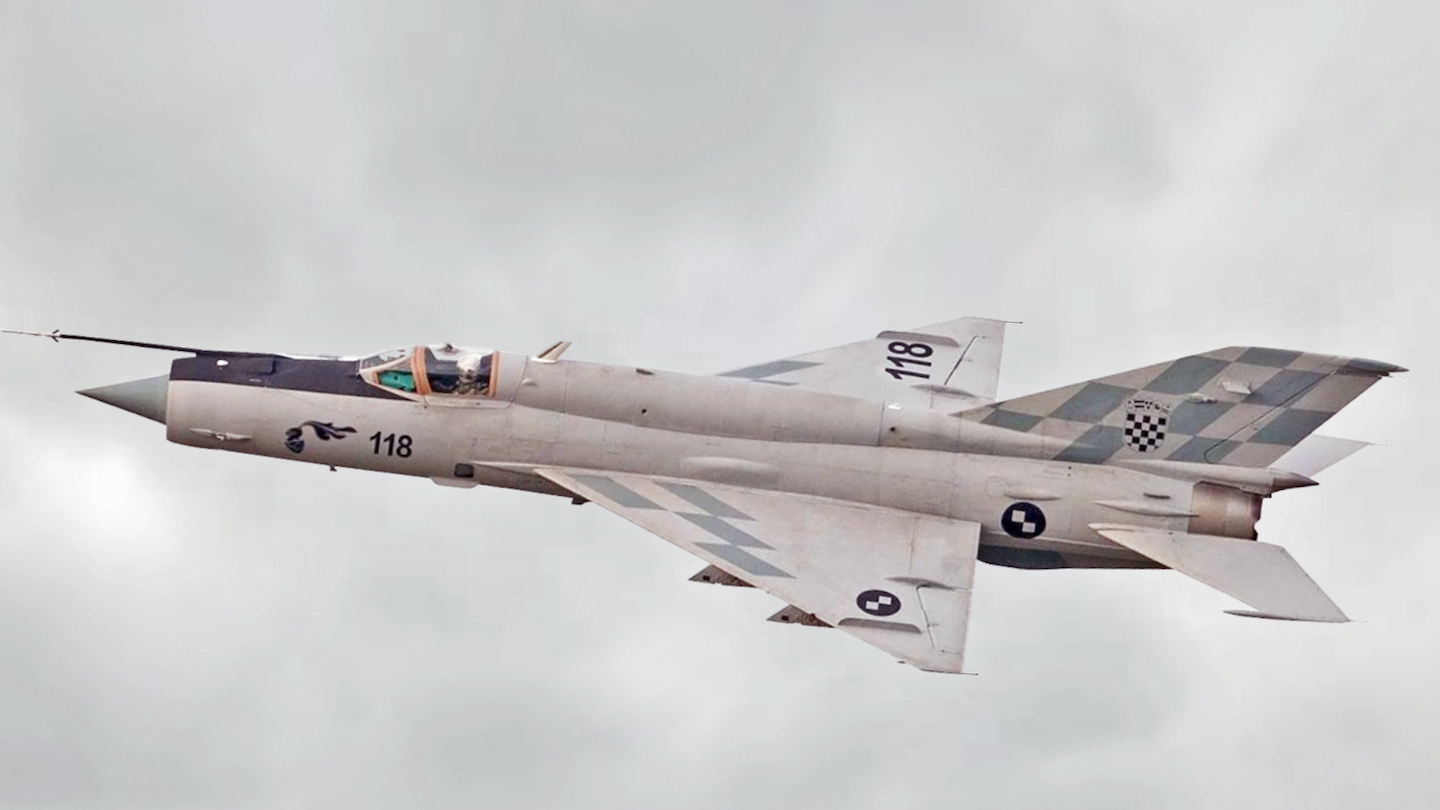The last of the classic Cold War-era MiG-21 Fishbed fighters in Europe have been stood down from operational duties. Assigned to NATO, the Croatian Air Force was the final European operator of the MiG-21, a type that originally entered service back in 1959 and which had been a presence over the continent ever since then, in the hands of more than a dozen different nations.
Croatia’s Ministry of Defense announced that, as of yesterday, Dec. 1, its MiG-21s — which equip its sole fighter squadron — would no longer defend the country’s airspace during peacetime quick reaction alert (QRA) duty.

Although Croatia has already begun to receive far more advanced Dassault Rafale multirole fighters, these won’t start operational duties yet, since they are required for pilot training. The Croatian Ministry of Defense had previously expected the Rafale to achieve initial operational capability by the end of 2025, but this could slip until early 2026.
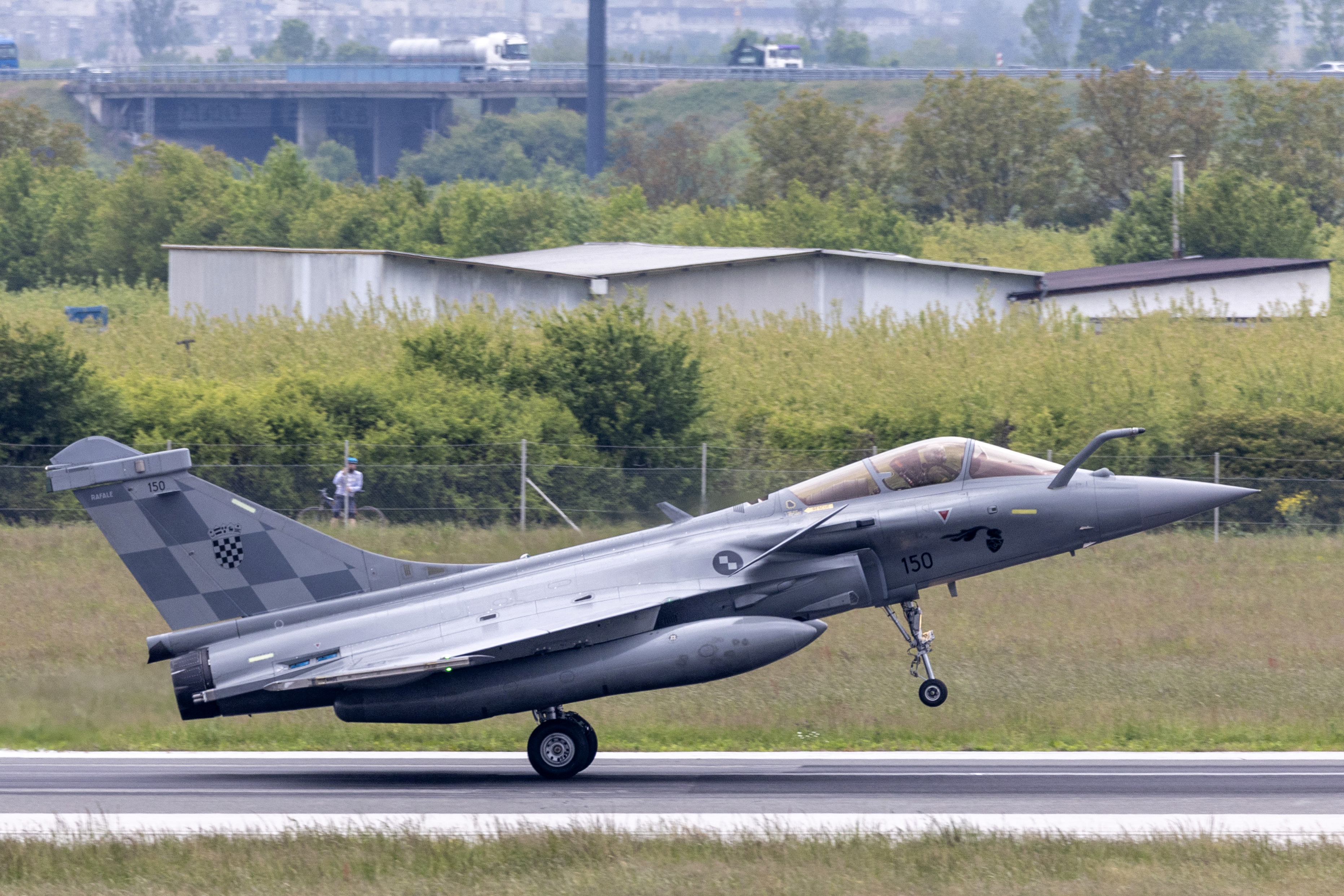
Until then, Croatian airspace will be temporarily guarded by the Italian Air Force and the Hungarian Air Force, flying Eurofighter Typhoons and Saab Gripens, respectively, from air bases in their own countries.
Ironically, both the Typhoon and Gripen had been offered to Croatia to replace its MiG-21s, together with F-16 Block 70/72s and second-hand F-16s, before the Rafale was chosen in May 2021.
The final selection of the Rafale was also protracted, only happening after an earlier deal for 12 second-hand Israeli F-16C/Ds had collapsed in 2019 when the U.S. Congress refused to approve the transfer of the fighters.

The Croatian government is not paying for the stopgap QRA coverage, with the air defense fighters being provided under a NATO arrangement broadly similar to the alliance’s Baltic Air Policing mission, which protects the Baltic states.
Currently, the Croatian Air Force has received seven Rafales (five single-seaters and a pair of two-seaters), with the remaining five single-seaters due to arrive by the end of April 2025, at the rate of one aircraft per month. Like the MiG-21s, the Rafales fly from Pleso Air Base, also known as the 91st Air Base, co-located with the international airport in the country’s capital, Zagreb.
As we reported before, the 12 Rafales will provide a huge leap in capabilities for the Croatian Air Force, which will advance from a second-generation fighter armed with short-range air-to-air missiles to an advanced fourth-generation jet offering active electronically scanned array (AESA) radar, beyond-visual-range air-to-air missiles, precision attack, and many other potential new capabilities.

The only air defense armament available to the MiG-21s was the infrared-guided R-60MK (AA-8 Aphid) air-to-air missile, as well as the internal 23mm twin-barrel cannon. The Fishbed had a particularly important air defense role, considering that Croatia for many years otherwise only operated anti-aircraft guns, man-portable air defense systems (MANPADS), and vehicle-mounted Strela-type short-range surface-to-air missiles.
It’s unclear when the MiG-21s will cease flying altogether, with the potential that some training activities or familiarization flights will still take place. However, as of now, the Fishbed has ended its operational service in Europe. The last previous operator on the continent, Romania, retired its upgraded MiG-21 LanceR fleet in May 2023.
In recent years, only a handful of Croatian MiG-21s were still active, hampered by dwindling supplies of spares.
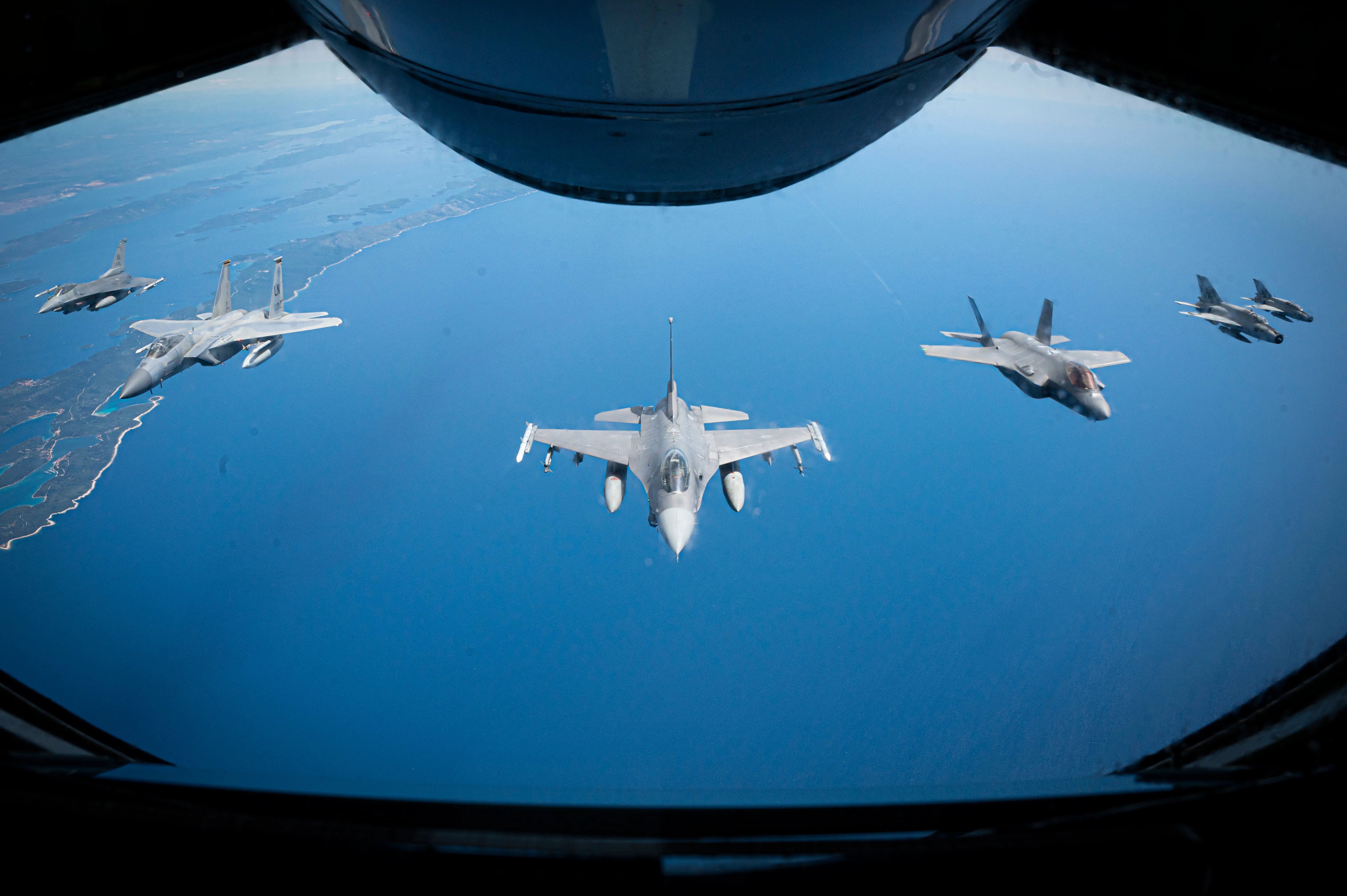
Emerging from the violent breakup of Yugoslavia, Croatia received its first MiG-21 when a Yugoslav Air Force pilot defected to the country in one of the jets in February 1992. The windfall fighter was then put into Croatian service but was shot down over Bosnia and Herzegovina in June of the same year.
Another pair of MiG-21s arrived in Croatia via defections in May 1992, one of these also being lost in combat.
As recently independent Croatia built up its air force, it acquired 40 MiG-21s from Ukraine between 1993 and 1994, these aircraft having been originally used by another ex-Soviet state, Kyrgyzstan. These were provided to Croatia despite an arms embargo. Of these fighters, 26 were put into Croatian service, while the other 14 were used for spare parts.
As well as another wartime shoot-down, in May 1995, the Croatian Fishbed fleet suffered six attrition losses after hostilities had come to an end in September 1995.
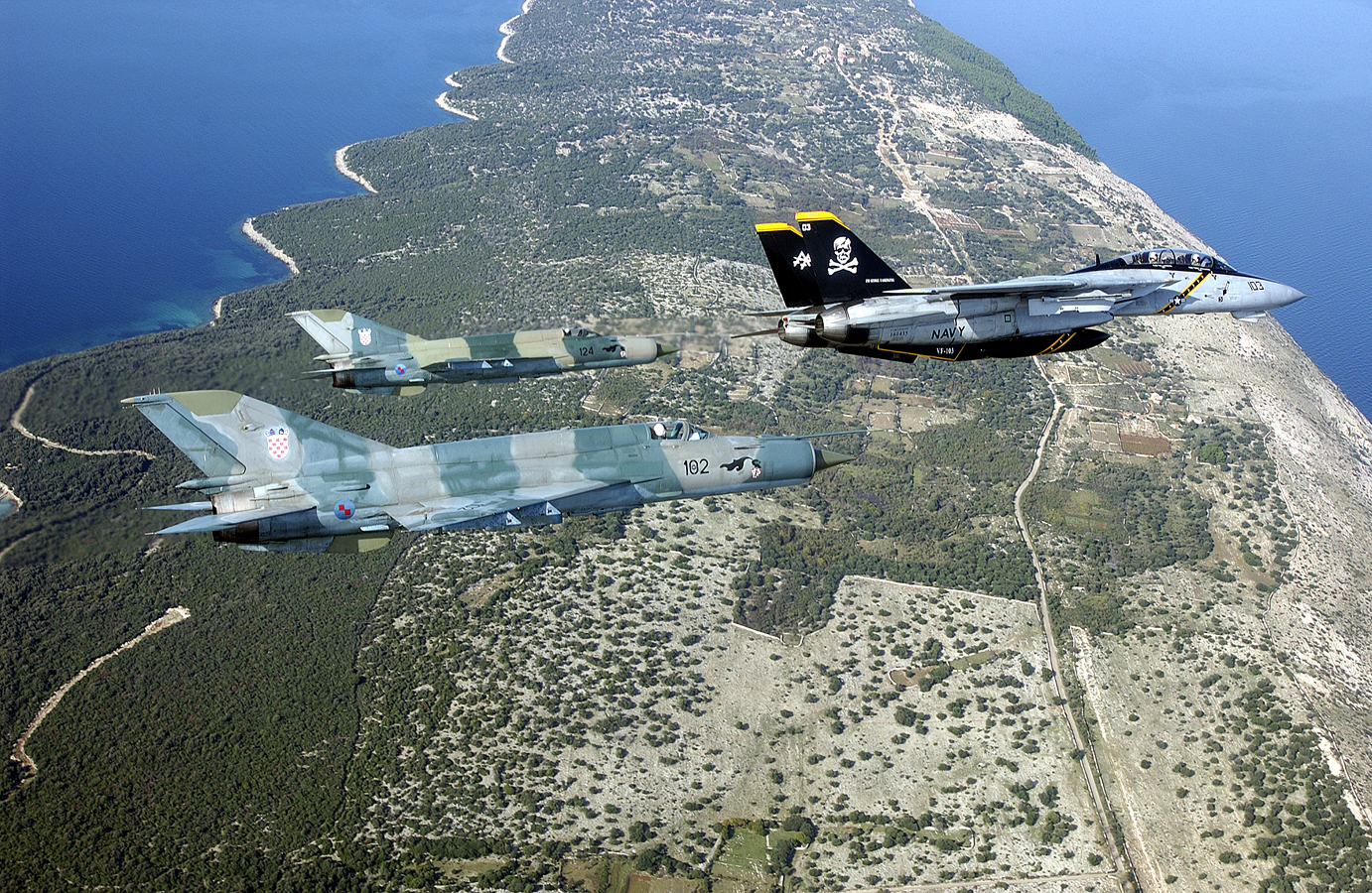
With no replacement in sight, in 2003, Croatia decided to provide eight of its single-seat MiG-21s with a modest upgrade, undertaken in Romania, which were intended to allow them to serve until 2024. However, this was primarily an overhaul and is in no way comparable to the extensive modernizations undertaken on Indian or Romanian MiG-21s, for example. At the same time, another four two-seat MiG-21s were acquired, either from Poland or Romania.
With NATO membership on the horizon, the upgrade did add Western communication, identification, and navigation systems and the aircraft emerged from the work with new designations: MiG-21bisD for the single-seaters and MiG-21UMD for the two-seaters.
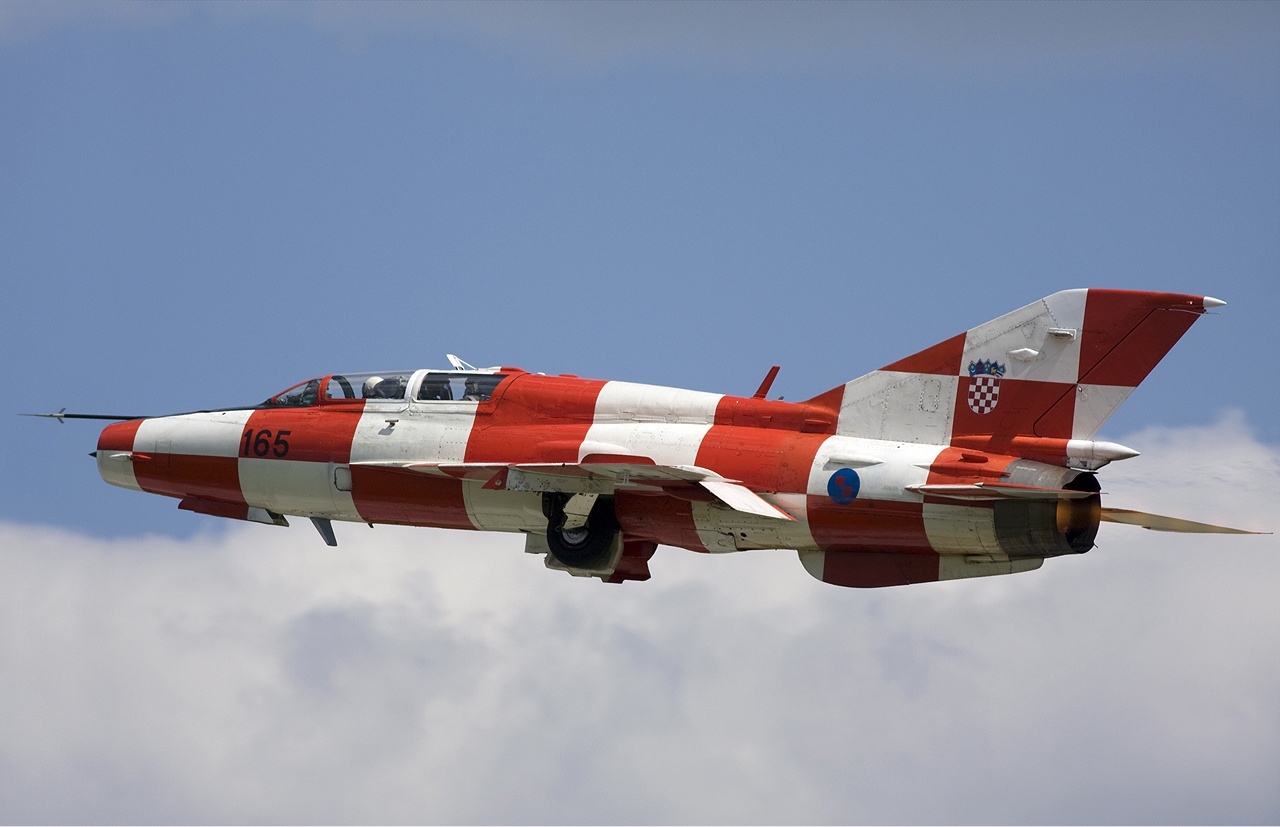
A further overhaul and refurbishment for seven Croatian MiG-21s took place in Ukraine, between 2013 and 2015, and Zagreb also bought another five Fishbeds at the same time, although these turned out to be problematic, and all of them spent a period grounded. Meanwhile, the Croatian government investigated their provenance, amid reports that four of them had fuselages taken from second-hand Bulgarian MiG-21s, which would have breached the terms of the contract.
With the MiG-21’s retirement looming, Croatia held a public farewell for its MiGs at Pleso in May of this year, which also included participation from the Rafale.
The MiG-21 will be remembered in Croatia as the backbone of its fighter arm throughout its highly turbulent formative years and eventually for more than three decades.
At the same time, Croatia will go down in history as the final operator of the MiG-21 in Europe. The Fishbed still serves elsewhere in the world, however, notably in India and North Korea, while smaller numbers of the iconic fighters are still operating in a handful of other countries.
Contact the author: thomas@thewarzone.com
